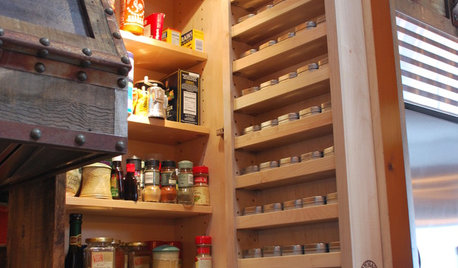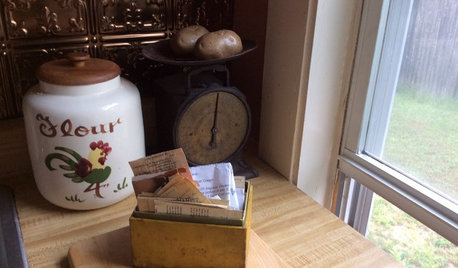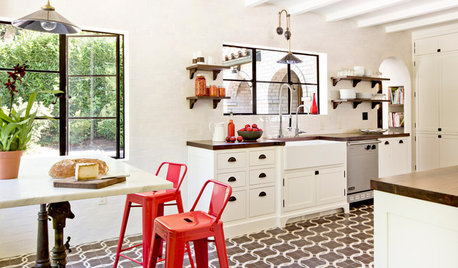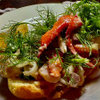Grinding wheat berries for flour for bread; conversion to ounces?
Lars
3 years ago
last modified: 3 years ago
Featured Answer
Sort by:Oldest
Comments (9)
Lars
3 years agoRelated Discussions
Anyone grind their own flour?
Comments (17)christineny - Any standard enriched bread recipe will make burger/dog buns, so pick from any of your favorites. You really don't need a special recipe. I do have some tips I'll share that hopefully will make some sense. 1. If you happen to have muffin top pans (usually 6/pan and are very shallow, about 1/2-inch deep), they work great for helping to form a nice round burger/sandwich bun, but on a cookie sheet is just fine. There are pans designed for both hamburger and hot dog buns, but I've improvised and used what I already have. I also have a Pizza Piccolo Pan (12 shallow impressions - I got it from King Arthur) that I use to make small sandwich buns (1.5-2 oz. dough). I measure the dough 2-4 oz. for regular burger buns (depending on how large I need them). You can go larger if you like, just remember 1 oz. of bread is a serving, so you can have a lot of bread servings tied up in one bun - it's already at least 2-servings. After you form the dough ball, pat it to about 1/2-inch thick (oil your hands for easy handling of the dough). Cover and allow to rise per usual... 2. The amount of dough for hot dog buns is approximately the same size as the hot dogs you are going to use (also 2-4 oz.), rolled to approximately the same length and size as the hot dog you are using. I scale (weigh) the dough for hamburger buns and hot dog buns so that they are close to the same size when done. I bake hot dog buns two at a time in small loaf pans (3-1/4x5-3/4-inches). This is convienent for me because I can bake a couple if I have extra bread dough from making loaves, and we only use 2 at a time and these freeze nicely wrapped in a pop-up sheet of foil I get from Sam's Club. When the panned hot dog buns are done/cool, I pull the two apart and slice each one down the middle, but not quiet completely through. These are perfect for holding a hot dog that I butterfly open (one cut almost completely through) and grilled open. You can also place the hot dog size pieces of dough on a baking sheet to raise/bake individually. Another option is to place them in a pan for pull-apart hot dog buns - use a pan about 5-6 inches wide, which is the approximate length of most hot dog buns (disposable 8-1/4x5-1/4x1-inch foil pans work pretty good for 5 hot dog buns for regular hot dogs). I always keep individually wrapped burger/sandwich buns in the freezer. -Grainlady...See MoreHow do I clean wheat berries for grinding?
Comments (1)I'm not familiar with Insecto. I'd check to see if it's safe for human consumption. Contact your County's Cooperative Extension Office and talk to an Ag. Agent. They may have specific information, or can get it for you. 1. Are you purchasing new crop wheat (yet to be harvested this year)? If so, wheat that is 2-3 years old is best for milling, although new-crop wheat CAN be used. If you get new crop wheat, you might want to store it for a year or two, if possible, before using it. 2. Is this field run grain? Are you getting it straight out of the combine hopper and will need to remove the "solids", including chaff, beetles, cricket and grasshopper legs (and other bits of them), stones and other assorted solid matter? Or will it be cleaned at the elevator - harvested with a combine and then cleaned by passing through screens, sieves, or fans to remove chaff and foreign material at the elevator and bagged? 3. Are you getting food-grade wheat (for humans) or feed-grade wheat (normally destined for animal use)? 4. If possible, get the protein and moisture count so you'll know whether it's best used for yeast breads or low-protein and best used for quick breads and other baked goods where you don't want a lot of gluten development. If it's running 10% protein, or less, you will want to add some vital wheat gluten when using it for yeast breads. If the wheat has 14% protein, or over, that's flour you can expect will take a LOT of kneading to develop that much gluten in it. If it's high in moisture, you'll have to dry it before storing or milling it. 5. If you "wash" wheat, you MUST make sure it's well-dried in an oven or dehydrator before you use it. Wheat high in moisture will glaze over mill stones (if your mill grinds with stones), or clog an electric mill and ruin it. Glazed stones have to be removed and cleaned, dried, and reinstalled. It's always good to have an extra set of mill stones for your mill, should they glaze over. Personally, I've never washed wheat, even wheat I got straight out of the combine and had to winnow the chaff and sift the solids out of it myself. After it was winnowed and sifted, we blew the dust off with air from an air compressor. 6. Wheat is normally "cleaned" (or triple-cleaned) by passing it through screens, sieves and air from fans, not washed. Some operations even use de-stoners to make sure any small rocks/stones are removed, as well as a magnet to pull out any foreign bits of metal, and get the dust blown off it with air from a series of large fans. Triple-cleaned food-grade wheat means it's relatively dust-free and you get primarily whole seeds. Feed gain will be lower-quality grain, have more broken seeds and who knows WHAT else in it, and require further cleaning for human use. If your grain has a lot of broken seeds in it, then you chance having it go rancid during storage. Once the bran (coat) is cut or cracked, the germ oil is exposed to oxygen which quickly goes rancid. After purchasing hundreds and hundreds of pounds of wheat over the years, I'd rather spend the money on quality wheat with a known protein and moisture level, that has been triple-cleaned, and is food-quality, than clean my own; although I've never passed up free wheat from friends and relatives, even if I had to clean it. It's a LOT of work to clean a bushel of wheat. Nothing like sitting out on the patio on a July day in 100F heat with a bowl of wheat in your lap. First you pick out, or screen out, all the "solids". Then, with a huge fan blowing, you pour small amounts of wheat between two containers (over and over again) and the "stuff" (chaff, beards, bug-bits, weed seeds, etc.) blows all over the place. Then you sift it through screens to remove any large bits you missed, through another screen so the broken grain is separated from the whole. Last, blow the dust off with the air compressor. -Grainlady...See MoreCrusty French Bread With Almond Flour? Possible?
Comments (17)Possibly a lot more vital wheat gluten. It adds protein as well as replacing the gluten missing in the gluten-free or low-gluten flours. I worked on a low-carb bread machine recipe for a diabetic friend who is very carb-sensative and this is the ingredients list. I won't make the recipe anymore even though it was never "right"....can't stand the taste of it after so much testing. The recipe might give you some ideas for the recipe you are working on. If you want your bread to taste like rye bread, add some caraway seeds. I pulverized the seeds into powder rather than using them whole, but that's because hubby doesn't like seedy bread and I think the flavor is more intense and a little caraway went a long way. 1/2 c. + 2 T. water 1/2 c. kefir (omit and use more water) 1/2 c. vital wheat gluten 1/2 c. almond flour 1 to 1-1/2 c. rye flour (or whole wheat) 1/2 c. wheat protein isolate (could also use bread flour) 2/3 c. flaxmeal 1 egg 3 T. hi-maize flour (adds more fiber and helps control blood sugar) 2 T. agave nectar (or palm sugar - both are low-glycemic) 1/2 t. salt 2-1/4 t. SAF Instant Yeast -Grainlady...See MoreHelp with Honey Wheat Bread
Comments (34)I have made that bread dough in my machine several times, but just the one-loaf version. I've got a Zojirushi and it does what you describe, Chase. It has a 45 minutes first rise, a stir down, followed by a 22 minutes 2nd rise. So obviously, when I take the dough out & shape it, it gets another, 3rd rise. Regarding leaving whole wheat dough in the fridge, I've done that several times. I don't think there is any problem in leaving it overnight or even one day. I cannot remember if I've left it in the fridge for more than two days though. And as far as the orange juice goes, I bought some frozen orange juice concentrate just for baking. I leave it in the freezer for when I'm making any kind of whole wheat yeast dough. I mix equal parts OJ concentrate with water so that a portion of the liquid called for in the recipe is orange juice. I think King Arthur is right -- it does seem to counteract any bitterness that is usually assoicated with 100% whole wheat baked goods....See Moreplllog
3 years agoLars
3 years agoplllog
3 years agoLars
3 years agolast modified: 3 years agoplllog
3 years agoLars
3 years agoplllog
3 years ago
Related Stories

KITCHEN DESIGN7 Steps to Pantry Perfection
Learn from one homeowner’s plan to reorganize her pantry for real life
Full Story
MOST POPULARModern Party Etiquette for Hosts and Guests
Learn the mannerly way to handle invitations, gifts and even mishaps for a party that's memorable for the right reasons
Full Story
HOUZZ CALLHow Are You Passing the Time at Home Right Now?
Share your thoughts about how you are coping with stress and staying grateful during this difficult time
Full Story
HEALTHY HOME12 Ways to Set Up Your Kitchen for Healthy Eating
Making smart food choices is easier when your kitchen is part of your support team
Full Story
MOST POPULAR7 Ways to Design Your Kitchen to Help You Lose Weight
In his new book, Slim by Design, eating-behavior expert Brian Wansink shows us how to get our kitchens working better
Full Story
KITCHEN DESIGNLove to Cook? We Want to See Your Kitchen
Houzz Call: Show us a photo of your great home kitchen and tell us how you’ve made it work for you
Full Story
KITCHEN DESIGNA Designer Shares Her Kitchen-Remodel Wish List
As part of a whole-house renovation, she’s making her dream list of kitchen amenities. What are your must-have features?
Full Story
KITCHEN DESIGN5 Home Cooks Share Their Favorite Family Recipes
Peek inside the kitchens of these Houzz users and learn how to cook their time-tested, passed-down dishes
Full Story
KITCHEN DESIGN16 Scrumptious Eat-In Kitchens and What They Want You to Serve
Whether apple-pie cheerful or champagne sophisticated, these eat-in kitchens offer ideas to salivate over
Full Story
DECLUTTERINGFoolproof Ways to Declutter Your Kitchen
If you find yourself fumbling through cupboards to find what you’re looking for, it’s time to take action with these simple steps
Full Story




plllog